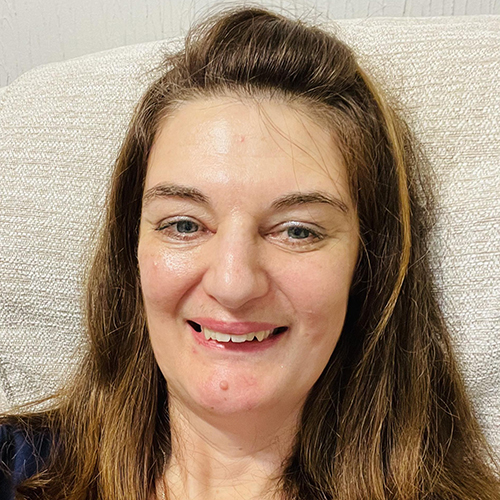Karen LayFlurrie

Karen qualified in 1991 and spent the early years working in acute care within Care of the Elderly where she developed a passion for all things wound. She developed her interest in Leg Ulcer Management through subsequent study and working alongside dermatologists, vascular surgeons, the wider TVN team and community nurse colleagues.
She has been working for West Hertfordshire Community Leg Ulcer Service since 2008. The service was taken over by Central London Community Healthcare Trust on 1st October 2019 and is outsourced to HertsOne GP Federation and they now run 15 clinics a week over 10 clinic locations throughout South and West Hertfordshire. She was appointed Clinical Lead for the service in February 2021.
Poster Presentation (Case Study category) at The Society of Tissue Viability 2023 Conference
Hopelessness, to healing and hope: How a simple, wearable 12-day electrical stimulation (EST) device* provided hope and independence for a patient with a hard-to-heal venous leg ulcer (VLU), present for 25 years despite following gold standard practice.
Abstract
Introduction – Despite gold standard compression therapy, many VLUs fail to heal1. Hard-to-heal wounds have been demonstrated to lack electrical energy2, vital in all stages of the wound healing cascade3, and require “kick-starting” 4.
Background of clinical issue – Harry, a 77 year old male with Polymyalgia Rheumatica, has lived with a VLU to right medial malleolus for 25 years. He has previously been under the care of vascular and dermatology teams and had varicose vein surgery, recently declining referral to plastics for grafting. Harry was managing self-care himself with periodic visits to the practice nurse, for high level compression bandaging. Independence is very important to the patient, managing his own business, he was concerned about the loss of income, when attending health-care appointments.
Management approach – Harry was referred to the community leg clinic for assessment on 21/06/22. Over the years, he had endured periodic infections, resulting in exacerbation of the wound. Pain was not an issue but found the persistent high exudate and odour very difficult to manage, particularly in a working environment. Lower limb assessment concluded chronic venous insufficiency. The wound measured 15 cm square with 40% slough. Declining further referral to the vascular team, he was very keen to obtain information about an EST* device, as he had lost all hope of ever achieving any healing, facing the rest of his life in bandages, with odour and “wet” legs.
Topical dressings and four-layer bandages continued. Over the following weeks, he developed eczema and an allergy, which was treated with topical steroids, delaying the application of EST*. Following consent, the 12-day EST* was commenced on 16/08/22, when the wound measured 16.5 cm square. Assessments including wound dimensions and photos were taken periodically.
Outcomes – At the end of the 12-day EST*, new epithelization was noted to the distal end and on 06/09/22, the wound measured 12 cm square (27% reduction). A marked reduction in exudate and good progression, resulted in Harry being measured for full compression hosiery kit, facilitating increased self-care and a reduction in clinician contacts.
On 28/02/23 (28 weeks after commencing the EST*), the wound measured 2 cm square (88% reduction), the smallest the wound had been for 25 years.
Harry is amazed with the progress, and “cannot believe that this has been achieved”. He expressed that he had previously given up all hope and now believes the wound will fully heal.
Conclusion – Hard-to heal wounds cause distress for patients, many of whom give up any hope of improvement. Application of a simple, portable EST* device transformed Harry’s wound, and provided him with a new prospective in life with hope for the future.
References
- Guest JF, Fuller GW, Vowden P (2020). Cohort study evaluating the burden of wounds to the UK’s national Health Service in 2017/2018: update from 2012/2013
- Kloth L, McCulloch J (1996). Promotion of wound healing with electrical stimulation. Adv Wound Care 9: 42–5
- Milne J., Swift A., Smith J., Martin R.(2021) Electrical Stimulation for Pain Reduction in Chronic Wound Healing. Journal of Wound Care 30 (7) 2-13
Khouri C, Kotzki S, Roustit M et al (2017) Hierarchical evaluation of electrical stimulation protocols for chronic wound healing: An effect size meta-analysis. Wound Repair Regen 25(5) :883-91
*Accel-Heal Solo














